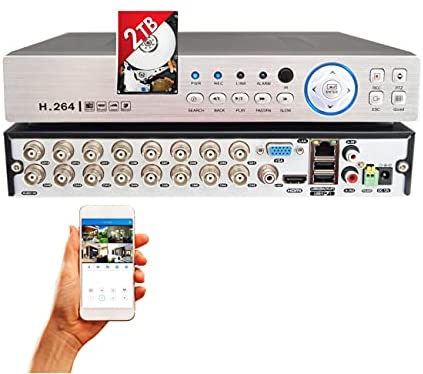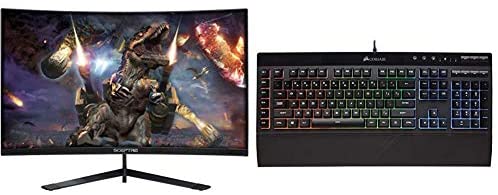Truescope is a new media monitoring tool that just raised $6.2 million in funding and opened a New York office; here’s a detailed look at the product
Truescope is a new media monitoring technology that’s launching in the U.S. This is a fairly crowded market already with startups, incumbents and reincarnations – and Truescope isn’t bringing anything new, per se.
So, how can it possibly compete?
The company’s core thesis is that many of the products on the market today are result of being “cobbled together.” In the words of Truescope CEO John Croll, this leads to “a pretty average customer experience.” Add to it complicated contracts and pricing and he thinks there’s room for new competition.
Mr. Croll recently briefed me on his product and plans. That’s the basis for this PR Tech Briefing – a complementary series to the monthly summaries and the occasional hands-on product reviews I publish.
It’s important to underscore, I don’t touch the product in these briefings. Instead, these are analogous to the way technology vendors brief Gartner or Forrester. I also ask a lot of questions and do my own research.
![A Look at the Media Monitoring Tool Truescope is Bringing to the U.S. [PR Tech Briefing] 1 john croll and michael bade of truescope](https://www.swordandthescript.com/wp-content/uploads/2022/03/john-croll-and-michael-bade-of-truescope.jpg)
Michael Bade (left) and John Croll (right) are the co-founders of Truescope.
1. Background on Truescope
Based in Sydney, Australia, Truescope was founded as a SaaS company by Mr. Croll and Michael Bade who is the CTO. Both come with experience in this vertical. They previously worked together at iSentia – an all-in-one PR tech tool and publicly traded company focused on the APAC market.
Mr. Croll left iSentia in 2018, amid some controversy, but perhaps wiser for the experience. He initially invested his own money to bootstrap Truescope. The company has since gained considerable traction and now has ~250 clients in New Zealand and Singapore.
(Side note: It doesn’t have customers in Australia where it’s headquartered by choice. This is because that country has some complicated media laws that make the media monitoring business difficult).
The management experience, commercial momentum, record of regular product updates, growth in annual recurring revenue (ARR) and a 100% renewal rate in Singapore, seem to impress investors. The company just raised $6.2 million in funding – which Crunchbase characterizes as a seed round – and has opened an office in New York.
The New York office is being led by Meg Crumbine, who previously spent a decade or so at VMS, a legacy broadcast monitoring service veteran PR people will remember.
For now, the company is exclusively focused on monitoring. However, Mr. Croll left open the idea that could change in the future.
2. Truescope product overview
The product does everything you’d expect from a media monitoring tool. It provides monitoring for print news, online news, broadcasts, podcasts and social media. It can also detect backlinks, which is something many of the incumbent products on the market can’t do.
The company does not field its own web crawler, so it gets all its content through partnerships. For example, it partners with publishers directly and LexisNexis. They are working through some of the paywall challenges – hoping to balance customer needs and cost.
Broadcast and podcast monitoring is white labeled from TVEyes, which is in my book, the industry standard. Several vendors do the same and they all make UX improvements to how the data is displayed in their platforms. Similarly, Truescope build its own “wrapper” around results from TVEyes in their product.
In terms of social media monitoring, the company checks off the important boxes: Twitter, Facebook, Instagram, Reddit, TikTok, YouTube and forums.
There are a few ways product is technically different:
- Real-time. All the searches are real-time. It ingests “millions” of content sources and displays results quickly. In my observation it is similar to the experience of searching Google – enter your query and hit the enter button – and you can see the results.
- UX design. The product itself draws from proven design practices. Mr. Croll describes it as combining design features of Gmail, Tableau and Apple News into a single product. Everything you need is within a click or two.
- Syndicated content. The system has a unique way of handling syndicated content. You’ll only see one result with all the syndications nested underneath. For example, you get mentioned by the Associated Press, the system shows you the source – the AP – and you can expand that to see the syndications. This also works for viral content – like a retweet on Twitter. This saves users in terms of both system clutter and data costs.
- Workspaces. Truescope uses the “workspace” concept that’s become popular in software. This means you can set up as many queries and dashboards as you’d like. So, if you work for an agency, or your company has multiple business units, you can have a separate workspace for each one. These are all customizable too, so you can change color schemes and logos for example.
Truescope also provides what it calls an “inbox” which I’ll get into in a bit.
3. Setting up searches in Truescope
Setting up searches is straightforward. As you can see in the screenshot below you can add or exclude certain keywords to help refine your results. Technically savvy PR pros can use Boolean search operators. For those that aren’t Truescope offers support to help customers get their searches set up.
(click image for high resolution)
There is also a range of filters to narrow the parameters by country or media type. You can also exclude certain outlets that you find to be noisy or irrelevant. As the screenshot below shows, the results appear in real-time, which helps to decide which filters to add.
(click image for high resolution)
This is useful because you can get it more of it done in one session. In some incumbent tools, you set up searches and then have to go back in and refine them as results populate over time.
4. The Truescope dashboard
The dashboard covers all the basics too. Truescope offers 12 widgets to draw from to build a dashboard. This includes key charts such as volume of coverage, share of voice, and sentiment analysis. All these widgets are configurable so you can set parameters like time. In addition, they offer “drag-and-drop” functionality, and you can resize individual charts to your liking.
Natural language processing (NLP) and sentiment analysis are white-labeled from outside companies including Google. It’s probably hard for any company to match the AI capabilities of Google. Further, Truescope seems to be able to access the processing power without jacking up the cost for customers.
The product does a sentiment analysis a little differently from other vendors in the space too. It analyzes the sentiment for every “entity” in a story – essential people, brands and other subjects in a story. Sentiment is rendered as positive, neutral, negative and mixed – along with a probability score.
The archive of results is kept for as long as the source publisher will permit. At a minimum, you can keep a record of an article for year-over-year comparison, even if you can’t access the underlying content 12, or 24 months later for example. This is an important point, because you want to be able to measure and compare results over time. Some vendors have time limits, and you lose your data after a period of time.
The company says integration with Google Analytics is on the product roadmap. Truescope doesn’t not offer earned media attribution at this time. For other vendors, that feature may be shaken up with the demise of third-party cookies, so we’ll have to see how it plays out.
(click image for high resolution)
5. Alerts and reporting
You can set up alerts to be notified of new mentions by email. Alerts can be for whatever you want – brand mentions, competitors, or certain keywords. You can also configure the alerts so you get updates as they happen or one a day as you might prefer.
(click image for high resolution)
The company is working on a feature it calls “spike alerts.” It promises to do what it sounds like: it’s a configuration of an alert you can set for when there’s a spike in coverage.
Reporting – for a larger group – works the same way. For example, you can have a summary of key mentions go out in newsletter format to a distribution every day or every week. You can also schedule a time to send it or have it aggregate results and wait for you to send it manually.
A manual send is useful for those wise PR pros that want to review such summaries before they go out to leadership. You can add, remove or edit and re-order the sources. It’s mobile-friendly too. So, if you are back to the office and want to edit your daily summary on your phone while riding the subway (or ferry) to work, you can.
The reporting section is customizable too. You can change theme, logos, hero images, for example. You can even view video captured from TVEyes right in the report. In other words, you or your recipients don’t have to click and visit a website to watch that media clip.
(click image for high resolution)
6. The Truescope inbox
I’m the type of person that likes to start with a dashboard view – I want to see the big picture for the day – but that’s not how everyone works. In doing customer UX research, Truescope found a lot of corporate communications people gravitate toward an “inbox.”
The inbox in Truescope looks like an email inbox, but instead of emails, it contains all the news and coverage results from your searches. The idea is to allow busy PR people to sort through a lot of content quickly. Since most PR people are familiar with the inbox concept already, it’s an intuitive feature.
You can save or delete results right from the inbox. In addition, you can share information – to social media or by email – with a single click.
(click image for high resolution)
7. Truescope pricing and customers
The company did show me a pricing list – and I admire their transparency – but it’s a tentative list. They haven’t settled on pricing for the U.S. market yet, but they aiming to make it competitive.
Truescope will offer two pricing formats. One format will be a fixed fee for a short period. This is aimed at accommodating agencies that might have client projects or campaigns. They’ll know their costs for media monitoring upfront and can put that in their pitch.
The second format is tiered pricing – basically small, medium and large. These tiers will be based on levels of customer service and data – this is where the way they handle syndication noted above will save you money. Importantly, there won’t be limits on user seats or searches.
I searched all of the major business software review sites – G2, TrustRadius, Capterra, GetApp, and more – and didn’t see a single review yet. I attribute this to the fact the company is a new player and is just beginning to break into the U.S. market.
8. Competitive advantages
Truescope is essentially saying it’s built the proverbial better mousetrap. To that end, Mr. Croll laid out four competitive advantages in our conversation.
First, all the content is integrated. Many current media monitoring providers can monitor different media types, but they treat these separately from a feature standpoint.
Second, the platform is built on modern technology. This means the design is intuitive and the data displayed is real-time.
Third, he cites pricing and contracts. Truescope aims to be less expensive, but that’s not the same thing as competing on price. The goal is to compete on the simplicity of pricing and contracts. They are able to do that in a way incumbent vendors can’t because it was baked into the product from the beginning.
Finally, Mr. Croll is aiming to ensure his employees have experience working in communications. For example, he wants team players that understand the challenges PR people face – and why a tool like Truescope is important – rather than someone that simply parrots a script on a demo.
9. PR tech assessment
While it’s important to note I didn’t test drive the software, Truescope looks to me like it performs as billed. I often ask presenters – in this case, Mr. Croll – to click on certain things in a demo or show me different aspects of the software. This helps me to understand how the product works and doubles as a test of sorts. Everything that I saw on this demo worked as promised.
The company is new to the U.S., but it’s not new. They have a couple of hundred international customers already. That means the product has been tested in real environments with real customers.
Venture investors will often say they invest in the team as much as they do in the idea. You can see why with Truescope. The leadership team is seasoned and has experience building a product and growing a company. Despite this, the company seems to be open-minded in its approach – listening to the market and being open to feedback.
If you are in the market for media monitoring or coming up for renewal with an incumbent, I’d recommend contacting the company and getting a demo for yourself. There are many potential advantages to being among the company’s first U.S.-based customers.
* * *
Be sure to check out these other briefings and product reviews as you consider your options:
If you work for a solution provider and want to learn how to get a post like this for your company, this page spells it all out for you.
If you enjoyed this post, you might also like:
9 Corporate Characteristics to Look for When Buying Public Relations Software
![A Look at the Media Monitoring Tool Truescope is Bringing to the U.S. [PR Tech Briefing] 2 s truescope screenshot query builder channels2](https://www.swordandthescript.com/wp-content/uploads/2022/03/s_truescope-screenshot-query-builder-channels2.jpg)
![A Look at the Media Monitoring Tool Truescope is Bringing to the U.S. [PR Tech Briefing] 3 s truescope screenshot query builder items](https://www.swordandthescript.com/wp-content/uploads/2022/03/s_truescope-screenshot-query-builder-items.jpg)
![A Look at the Media Monitoring Tool Truescope is Bringing to the U.S. [PR Tech Briefing] 4 s truescope screenshot dashboard](https://www.swordandthescript.com/wp-content/uploads/2022/03/s_truescope-screenshot-dashboard.jpg)
![A Look at the Media Monitoring Tool Truescope is Bringing to the U.S. [PR Tech Briefing] 5 s truescope screenshot report](https://www.swordandthescript.com/wp-content/uploads/2022/03/s_truescope-screenshot-report.jpg)
![A Look at the Media Monitoring Tool Truescope is Bringing to the U.S. [PR Tech Briefing] 6 s truescope screenshot report schedule](https://www.swordandthescript.com/wp-content/uploads/2022/03/s_truescope-screenshot-report-schedule.jpg)
![A Look at the Media Monitoring Tool Truescope is Bringing to the U.S. [PR Tech Briefing] 7 s truescope screenshot](https://www.swordandthescript.com/wp-content/uploads/2022/03/s_truescope-screenshot-inbox.jpg)


